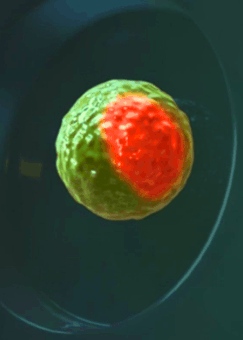Study advances stem cell embryos
 Researchers have grown cell clusters that resemble early embryos from stem cells.
Researchers have grown cell clusters that resemble early embryos from stem cells.
When transferred in utero, the cell spheres triggered the kind of remodelling events that happen at the moment of implantation on the uterine wall.
Although they do not develop into mature embryos, the researchers say they can be used as a cell-culture model of early development that could shed light on key processes underpinning the first period of life.
A few days after a mammalian egg has been fertilised, it develops into a blastocyst. This is a spherical structure made up of an external cell layer surrounding a fluid-filled cavity that contains a mass of embryonic cells.
Stem-cell cell lines have been obtained from both the external layer and from embryonic cells before, but Dutch researcher Nicolas Rivron and colleagues show that both cell types can interact in vitro to form blastocyst-like structures they call ‘blastoids’.
The blastoids are similar in shape to a 3.5-day-old blastocyst, and display similar patterns of gene activity.
Like blastocysts, they form when signals emanating from the inner mass of embryonic stem cells induce the development of the external cell layer.
In normal development, this external layer would go on to form the placenta, so the researchers hope that their model will help explain how the placenta forms and how the embryo implants into the lining of the uterus.








 Print
Print